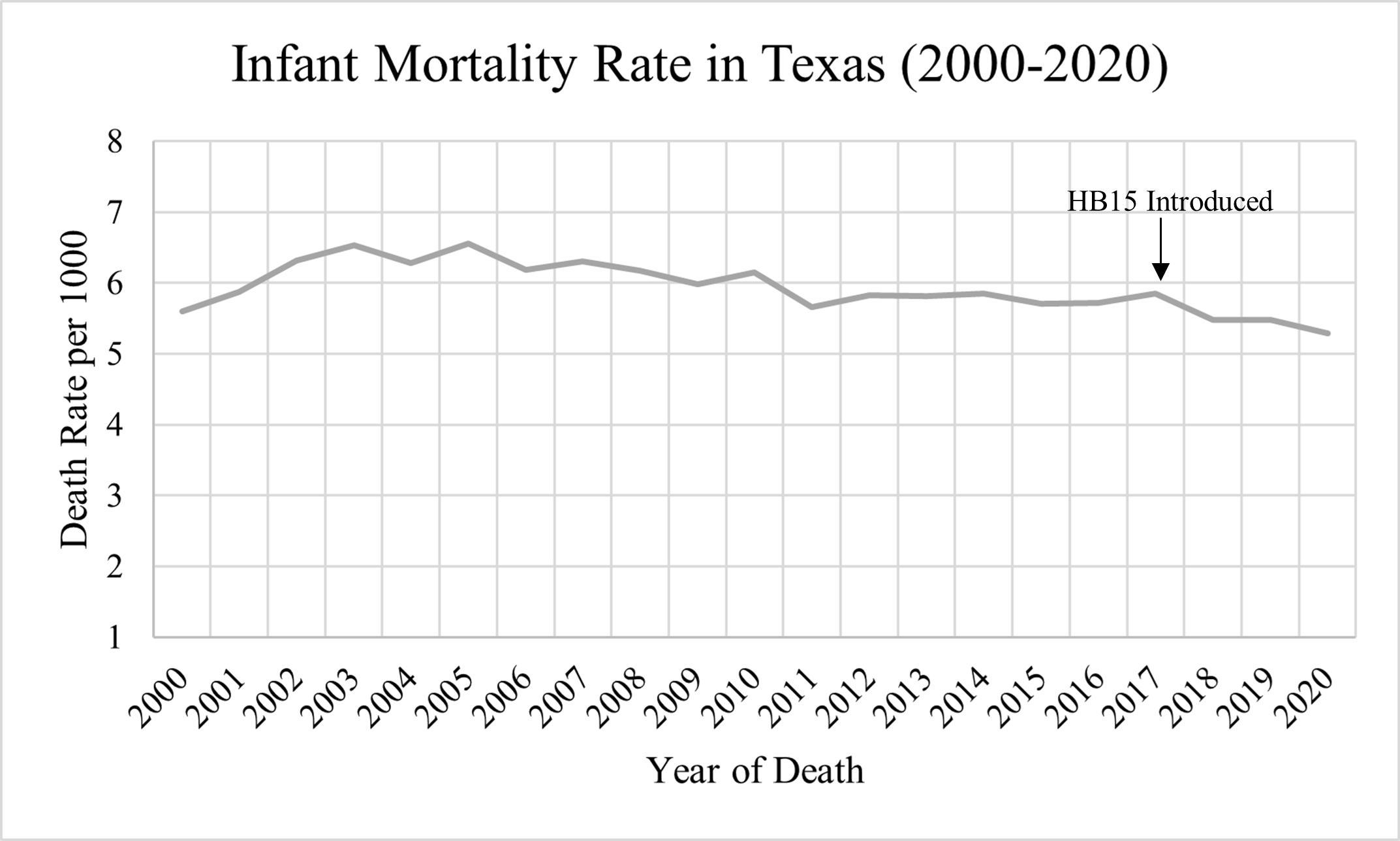Neonatal-Perinatal Health Care Delivery: Epidemiology/Health Services Research
Neonatal-Perinatal Health Care Delivery 5: Epi/HSR Covid-19/Potpourri
801 - Neonatal and Infant Mortality in Texas: Did healthcare legislation have an effect?
Publication Number: 801.249
- SA
Syed S. Ali
Undergraduate Student
Nemours Children's Hospital
Orlando, Florida, United States
Presenting Author(s)
Background:
In 2013, the Texas legislature passed House Bill 15 to create levels of neonatal and maternal care. In level IV, the bill outlined specifications for neonatal intensive care units (NICUs) including the ability to provide care for mothers and infants in critical condition, to manage transportation, and to possess various pediatric subspecialists. NICUs would be inspected by an appointed organization for verification of services provided. These regulations were to be put into effect no later than March 2017. Whether or not these requirements made an impact on the mortality rate of neonates and infants is unknown.
Objective: To determine if the NICU verification regulations established by House Bill 15 had any effect on the neonatal and infant mortality rates in Texas and if there were differences by sub-groups.
Design/Methods:
Using the Centers for Disease Control and Prevention’s public Wonder database we determined the number of births and deaths in Texas from 2000-2020 in infants and neonates, compared death rates before and after introduction of HB15, and also analyzed trends in infant mortality (death rate per 1000 live births in children less than one year of age, IMR) and neonatal mortality (death rate per 1000 live births in infants less than 28 postnatal days of age) over time. We performed univariate analysis comparing two epochs for the entire sample, and for subgroups (where possible) based on gestational age at birth, race, and gender.
Results:
A comparison of the period 2000 – 2016 vs 2017 – 2020 for all infants showed the following: total births 6,595,864 vs 1,506,463, IMR 6.03 vs 5.53, and neonatal mortality rate 3.86 vs 3.69. Trends in these mortality rates over time are depicted in the graphs. A similar comparison in preterm infants < 30 weeks gestation showed the following: total births 77,886 vs 17,931 and IMR 227 vs 211. A comparison among Black infants showed: total births 800,769 vs 206,985 and IMR 11 vs 9.8. A comparison among White infants showed: total births 5,496,967 vs 1,189,566 and IMR 5.4 vs 4.9. A comparison among male infants showed: total births 3,371,153 vs 769739 and IMR 6.6 vs 6.0. A comparison among female infants showed: total births 3,224,711 vs 736,724 and IMR 5.5 vs 5.1. The p value was less than 0.01 for all the above comparisons.
Conclusion(s): The neonatal and infant mortality rates in Texas in different subgroups either remained similar or decreased only slightly after the bill went into effect in 2017. No large changes were observed. Many factors other than the bill could have influenced these rates.
.png)
